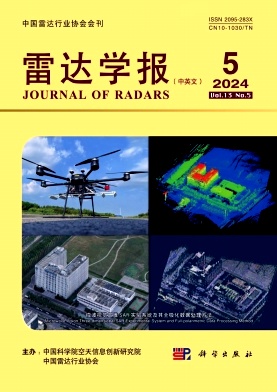基于原型理论的PolSAR图像特征表示
Q2 Physics and Astronomy
引用次数: 0
摘要
提出了一种基于原型理论的偏振合成孔径雷达(PolSAR)图像特征表示方法。首先,利用原型理论生成多个原型集。然后,使用正则化逻辑回归预测测试样本与每个原型集之间的相似性。最后,采用集合投影法得到PolSAR图像的特征表示。对PolSAR图像进行无监督分类的实验结果表明,该方法可以有效地表示不同土地覆被的极化特征,并获得满意的分类结果。本文章由计算机程序翻译,如有差异,请以英文原文为准。
Prototype Theory Based Feature Representation for PolSAR Images
This study presents a new feature representation approach for Polarimetric Synthetic Aperture Radar (PolSAR) image based on prototype theory. First, multiple prototype sets are generated using prototype theory. Then, regularized logistic regression is used to predict similarities between a test sample and each prototype set. Finally, the PolSAR image feature representation is obtained by ensemble projection. Experimental results of an unsupervised classification of PolSAR images show that our method can efficiently represent polarimetric signatures of different land covers and yield satisfactory classification results.
求助全文
通过发布文献求助,成功后即可免费获取论文全文。
去求助
来源期刊

雷达学报
Physics and Astronomy-Instrumentation
CiteScore
4.10
自引率
0.00%
发文量
882
期刊介绍:
Journal of Radars was founded in 2012 by the Institute of Space and Astronautical Information Innovation of the Chinese Academy of Sciences (formerly the Institute of Electronics) and the China Radar Industry Association (CRIA), which is located in the high-end academic journal and academic exchange platform in the field of radar, and is committed to promoting and leading the scientific and technological development in the field of radar. The journal can publish Chinese papers and English papers, and is now a bimonthly journal.
Journal of Radars focuses on theory, originality and foresight, and its scope of coverage mainly includes: radar theory and system, radar signal and data processing technology, radar imaging technology, radar identification and application technology.
Journal of Radars has been included in domestic core journals and foreign Scopus, Ei and other databases, and was selected as ‘China's high-quality science and technology journals’, and ranked the first in the category of electronic technology and communication technology in the ‘Chinese Core Journals List (2023 Edition)’.
 求助内容:
求助内容: 应助结果提醒方式:
应助结果提醒方式:


